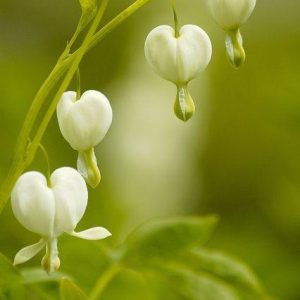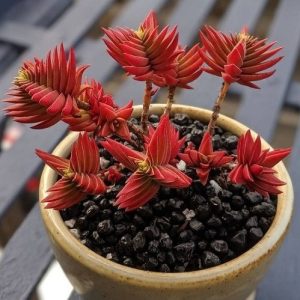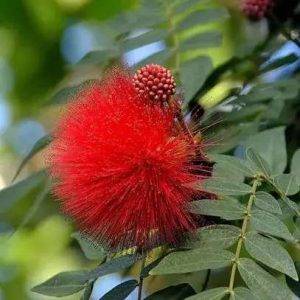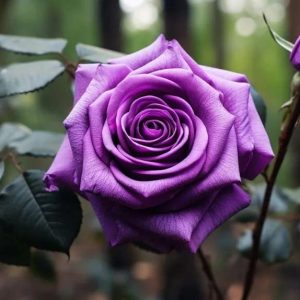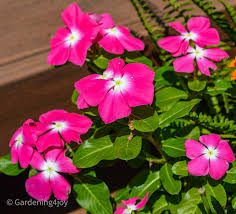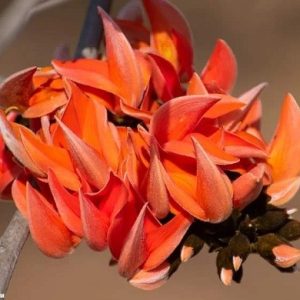Walking by a garden with sea holly growing in it is nearly impossible without stopping to check it out. These plants are so interesting and beautiful. With their striking shades of blue and long-lasting unique flowers, it is easy to imagine why they hold a special place in the sun gardener’s heart.
Sea holly offers long-lasting beauty and is almost too easy to care for. This plant thrives in those sunny spaces in your garden where nothing will grow.
Surviving the hottest and driest areas of our yard, it will be the star of your mid-summer garden. Let’s dig in and learn what we need to grow and care for this perennial flower.
Plant Type Herbaceous Perennial |
Soil pH Acidic, Neutral, Alkaline Native Areas |
Europe, China
Bloom Time
Summer and Fall
Flower Color
Blue, Purple
Diseases Powdery Mildew, Leaf Spot
Pests
Aphids, Slugs, Snails
Plant History

This carrot family plant has deep tap roots, historically used for medicine and food.
The flat sea holly, also known botanically as Eryngium planum, is a member of the carrot family. It produces a tap root similar to that of a carrot, growing deep into the ground in search of water, nutrients, and stability.
The sea holly is native to regions of Europe and Central China. Plants of the Eryngium genus were historically used as herbal remedies to treat various different ailments. The long taproots used to be eaten the way we eat root vegetables, like carrots and potatoes, today.
The plant has also gained popularity for its beauty and easy cultivation. Sea holly has been hybridized, and many varieties are available for gardeners to enjoy. It is also a favorite of florists. The flowering stems can last up to two weeks and dry beautifully.

Aside from the popular flat sea holly, there are other varieties of Eryngium. Below are just a few:
- Eryngium alpinium (Alpine sea holly)
- E. amethystinum (Amethyst sea holly)
- E. bourgatii (Mediterranean sea holly)
- E. maritimum (sea holly)
- E. pandanifolium (Giant sea holly)
Each of these varieties loves the full sun and will grow 1-3 feet tall and 1-5 feet wide. The mid-summer to fall blooms all resemble each other, although some are a bit more frilly than others, while others may have broader bracts or larger flower cones.
These plants can be propagated by taking root cuttings or growing from seed.

Root cuttings are a little tricky to do as it requires that the plant is dormant. If your sea holly is not dormant, do not try to propagate by root division! However, root cuttings ensure your plant is a clone of its parent plant, and is ideal for propagating specific cultivars in true form.
Begin by gathering the necessary equipment. You’ll need some pots of pre-dampened potting mix, a trowel to dig up your parent plant, and clean, sterile snips or pruning shears. Some rooting hormone is useful but is not absolutely required.
Dig up the dormant plant and rinse dirt off the roots to expose them all. Examine the roots closely, selecting a few healthy ones that are around the diameter of a pencil. You should not cut off more than 1/3rd of the plant’s root system when doing this method, and you will want to work quickly to prevent damage to the roots.
With your snips, cut your chosen pencil-diameter roots off cleanly and immediately replant the parent plant. This, paired with the plant’s dormancy, should reduce the risks of shock to the plant’s remaining root system.
Now examine your roots. For this process, you’ll need to cut approximately 3″ lengths of root. Trim the first root to a flat cut, then cut a 3″ segment off at an angle. If using rooting hormone, immediately roll this in the hormone, then set it into a pot with the angled cut pointed down. Cover the root entirely, keeping the flat-cut top just below the soil’s surface.
Repeat the process with the remaining root segments, cutting them flat on the top, measuring a 3″ segment, then doing an angled cut and planting it immediately (with root hormone if using). Plant the bottom of the root cutting without trimming off the bottom if it’s still thick enough to use.
Keep the soil damp but not soggy, and protect your potted roots over the winter. In the spring, you should see new shoots developing from the root cuttings.

You can grow this perennial from seeds purchased at your local garden center or collect seeds from your existing plants.
In the fall, clip off your mature (and brown) seed heads and collect them in a paper bag. This will allow the seeds to fall off naturally and keep them all in one place for you. Once the seeds have come loose, place the brown paper bag in the refrigerator for the winter months if you plan to sow them in the spring. Alternatively, do a fall-sowing of your seeds so they come up in the spring.
There are two common ways to plant sea holly. The first is by seed, and the second is by planting a plant purchased from a garden center or nursery.

You may purchase bare-root plants or potted plants from your local nursery. You might also have started from seed indoors! Let’s talk about how to plant them out.
Bare-root sea holly plants are uncommon, but they do exist. When you bring home a bare-root plant, remove it from the packing material it’s in (usually damp wood chips) and place it in a container of water. While it’s soaking, dig a hole that’s at least 2x the width and the required depth for the root ball.
Gently place your plant into the hole once you’ve prepared it, ensuring the tap root is as straight as possible – do not bunch up the roots to fit the hole! Backfill with garden soil and water.
If you’re planting your own start or a nursery plant that’s in soil, carefully remove it from its pot and gently untangle any roots that have started to circle. Again, plant it in such a way as to keep its taproot straight down for best growth and backfill with your garden soil to the same depth it was planted in its pot.
Sea hollies do not like a lot of water, but they will need some help getting established. Keep your eye on the plant and the soil it is growing in. Keep it moist by lightly watering it as needed.
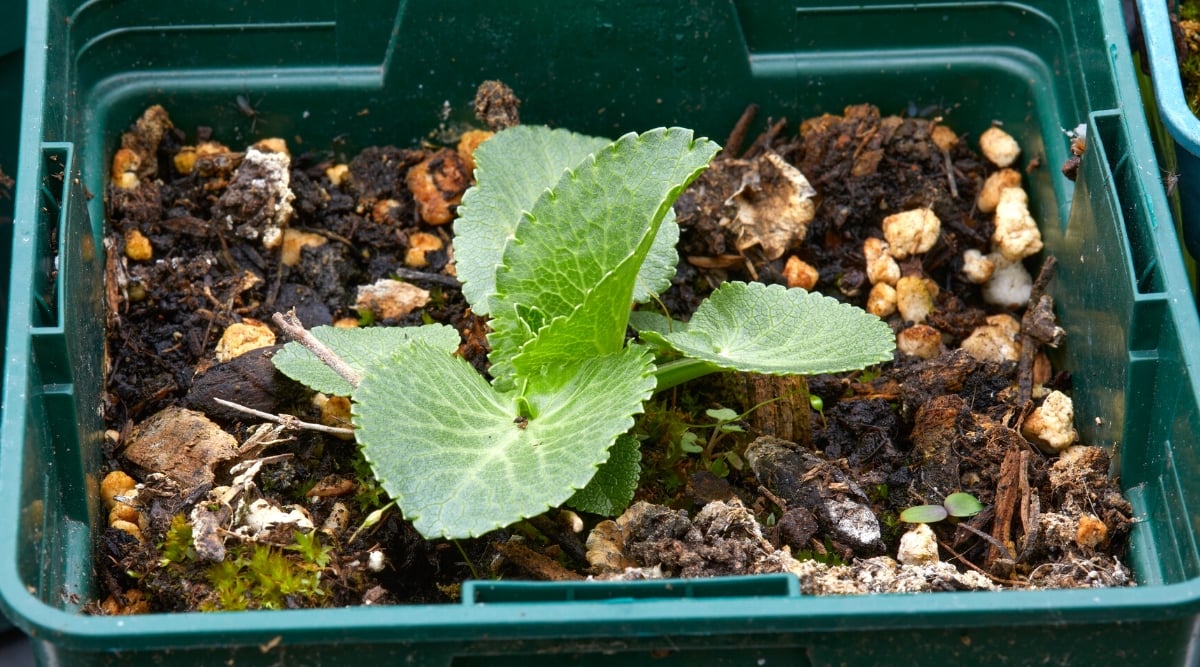
You have two choices to plant from seed: start your seeds indoors or directly sow them into the ground.
For seeds started indoors: Seeds should be planted indoors 10-12 weeks before your average last frost. Before planting, you should keep your seeds in the refrigerator for at least 2-3 months. Allow the seeds to come to room temperature before gently pressing them into the potting mix, but do not cover the seeds with soil. Keep the soil lightly moist. When they have germinated and have reached a few inches tall, harden your plants off to the outdoor conditions and then transplant them outside.
For seeds direct-sown outdoors: Your seeds should be planted in the fall. Prepare your planting location and press the seeds firmly against the soil’s surface. Do not cover with soil, and keep the soil moist.
These plants require vernalization or exposure to cold temperatures – without it, they will not germinate. In addition, sea holly requires light to germinate in the spring, so press these seeds firmly onto the soil’s surface but do not cover them!
Sea holly is slow to germinate. While if the conditions are ideal, it’ll pop up within a week or two, it can stall for as long as 90 days before popping up. Be patient!
Now that you have a happy plant growing in your garden, let’s explore care for these perennials.

You will have the most successful sea holly plants if they receive 8 hours of direct sun each day. These perennials are tolerant of a little shade, but this may result in weaker plants that may droop or flop under the weight of the flowers.

Sea holly produces a very long taproot. This taproot allows the perennial to be pretty drought-tolerant. Once your perennial is established in your garden, you may not need to water it all except during a very long dry spell. However, that doesn’t mean you should completely skip watering. To produce flowers, it does need water!
Hand-watering should be done at the base of the plant. This will prevent too much moisture from collecting around the base of the plant. If your soil retains too much water, the plant’s crown can rot.

This flower grows best in soil that is sandy and well-drained. It is also very tolerant of poorly fertile soils. If you grow it in soils that are not well-draining, you may struggle with root rot.
If the taproot sits in wet soil for too long, it can rot and die off, leaving the plant without its essential water and nutrient collector.

Most species are hardy in zones 4-9. These plants are tough and resilient and do not have any other climate requirements as long as they are planted within their hardiness zones. Sea holly is tolerant of humidity, salt, and dry conditions.

There is no need to fertilize this plant. These perennials thrive in poor soil. Adding too much fertilizer can cause them to sprawl.
Maintenance

Sea holly is a very low-maintenance plant. Once established, there truly is little for you to do other than enjoy their unique flowers.
Deadheading spent blossoms will help to lengthen the bloom time by promoting the formation of new flowering. However, the flowers dry very nicely while on the plant, adding continued interest in your garden well into the fall and winter.
At the end of the growing season, you may cut your plant right down to the ground. Similar to deadheading, this is optional! The dried flowers can provide something fun to look at in the wintertime when the rest of your garden may be barren.
Either way, it is important to give the rosettes of foliage some protection from the winter. You can place leaves or evergreen needles on top. Then, the plant won’t have to produce new foliage in the next growing season.
Enjoy an intriguing diversity of spiky blooms by mix-and-matching your favorite varieties.

- Hardiness Zone: 4-8
- Plant Size: 2-3 feet tall, 1-2 feet wide
- Flower Color: silver-blue
This pretty variety produces silver stems which support bright blue bracts. These blue bracts offset the silvery-blue cluster of egg-shaped flowers. Clump-forming ‘Blue Cap’ makes a great border plant for the front of your hot perennial beds. It also looks lovely planted in a mass on its own.

- Hardiness Zone: 4-8
- Plant Size: 2-3 feet tall, 1-2 feet wide
- Flower Color: silver-blue
‘Blue Glitter’ is considered to be an improved variety. Packing the same punch as the rest of the group, ‘Blue Glitter’ matures a bit faster and produces more blossoms. The deeply toothed blue-green leaves are low-growing from strikingly silver stems.

- Hardiness Zone: 4-8
- Plant Zone: 8 inches to 1 foot tall, 6 inches to 1 foot wide
- Flower Color: purple-blue
‘Blue Hobbit’ is a miniature version of the sea holly you may be used to. This is an excellent variety for the front of a flower bed or even a raised garden bed. The ‘Blue Hobbit’ flowers are a little more purple than some other varieties. They are still borne on silver-blue stems and are very long-lasting.

- Hardiness Zone: 5-9
- Plant Size: 2-4 feet tall, 1-2 feet wide
- Flower Color: steel-blue
The ‘Steel Blue’ variety is a beautiful selection for your cutting garden. This variety grows a little bit taller than some of the other varieties. The stems are long and perfect for your vase arrangements. This variety has classic steel-blue flowers that can reach one inch in diameter.

- Hardiness Zone: 4-8
- Plant Size: 2-3 feet tall, 1-2 feet wide
- Flower Color: Silver- White
If blue or purple does not fit into the color scheme of your garden, don’t sweat it. ‘White Glitter’ offers you everything the blue varieties do but in a beautiful silvery-white shade. The stems have a silvery-green hue which strongly supports the ivory egg-shaped flowers.

There are not too many insects that will bug sea hollies. This is partly because of its prickly appearance. But it also has to do with the plant’s habitat. If you grow it in too much shade, you may notice aphids, slugs, and snails causing issues with your plant’s lower leaves.
Planting in full sun will help to keep these insects away. If you run into issues with slugs and snails, you can remove them by hand. I am not up for that slimy task, so I would just head to my local garden center and buy an organic slug or snail bait.

Due to the growing conditions that these plants thrive in, they typically do not run into trouble with any diseases. However, if growing in a moist environment, you may notice fungal diseases such as powdery mildew or leaf spot.
These fungal diseases can be treated with copper fungicides if needed. The best way to keep diseases under control is to ensure each plant has ample airflow around it and keep moisture off of the leaves. Wet leaves are more susceptible to airborne fungal spores becoming caught in the moisture.

If you have a blazing sunny spot in your garden with poor soil, sea holly is the answer to all your problems. This perennial thrives in these types of conditions.
Plant them in groups for a big statement, or use them alone to make a spunky statement. If you have a cutting garden, this flower is a must-have! These blooms make stunning accents to your vases and bouquets.
Yes! As the flowers mature, they will produce seeds that rest within the bracts of the plant. These seeds can be taken off by the wind and will produce volunteer plants for you throughout your garden. If you do not want these plants to self-seed, simply deadhead the flowers as they begin to fade. Deadheading will also encourage the production of more flowers extending the bloom time.
It is not common to see this flower growing in containers. This is mainly because of the soil conditions required by these perennials. Another reason is because of their taproot, which grows so long that it would make it difficult to keep it growing happily in a container.
However, it can be done! Mix in some succulent potting soil along with your other potting soil to keep the roots nice and dry. Be prepared to re-pot this plant as needed. This species does not transplant easily, so keep that in mind when you are managing your expectations for this plant.
This species does not like to be moved once it has been established in your gardens. This is because of the long tap root that it produces. Be sure to select a space in your garden where you will be happy to have this perennial for years to come.
If your sea holly is lacking its typically silvery-blue color check how much water it is recieving. Browning of foliage is likely caused by too much humidity in the air or too much moisture in the soil. There is not much you can do about the humidity, unfortunately. But you can hold off on watering and give the soil some time to dry out.
Sea holly is the perfect perennial if you have a hot and sunny patch in your yard. These plants only look sharp and scary. In reality, they are unique and beautiful. With a few different varieties available to you, you can select the perfect variety for your garden. For such a low-maintenance plant, it adds a lot of beauty to your sunny gardens.

